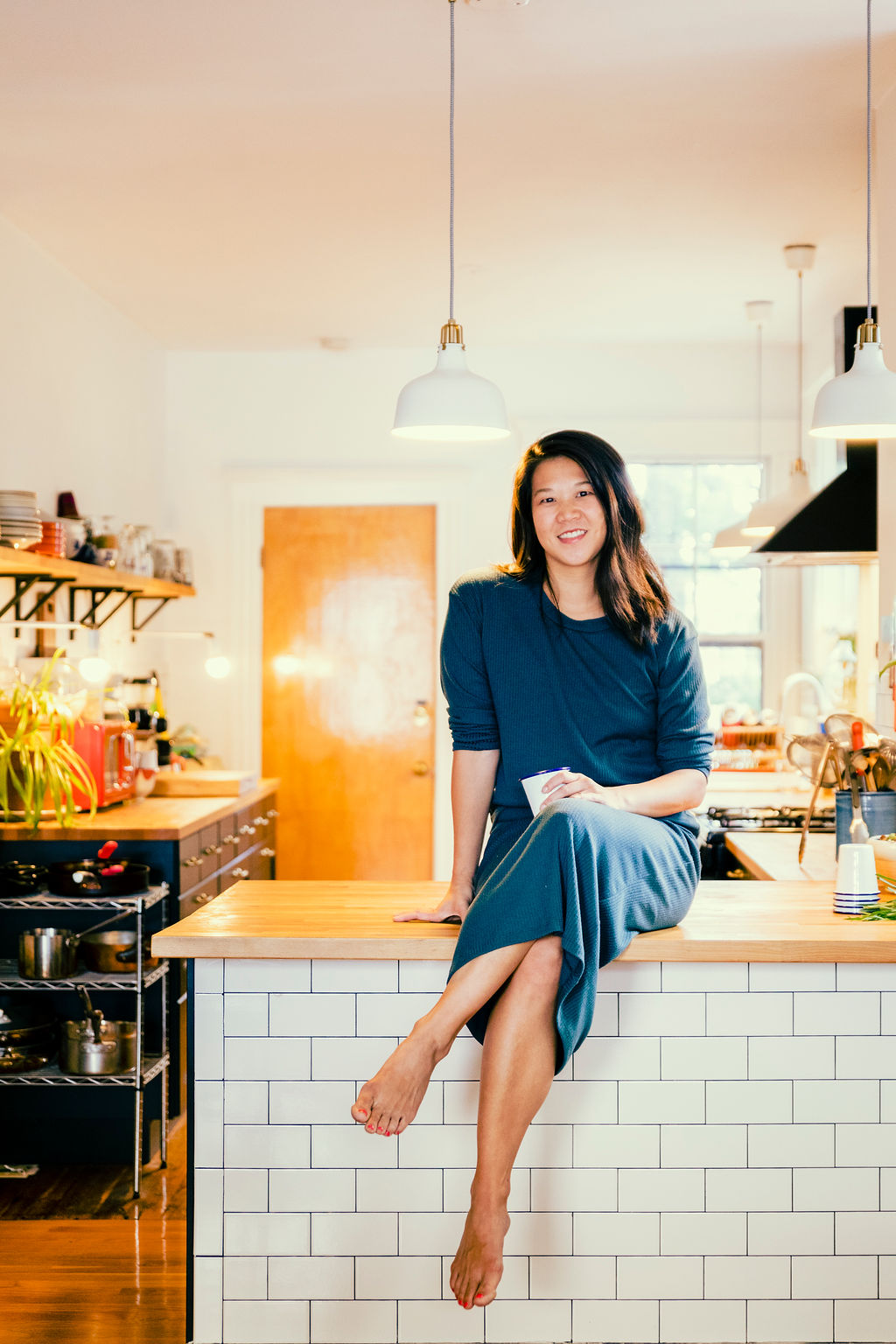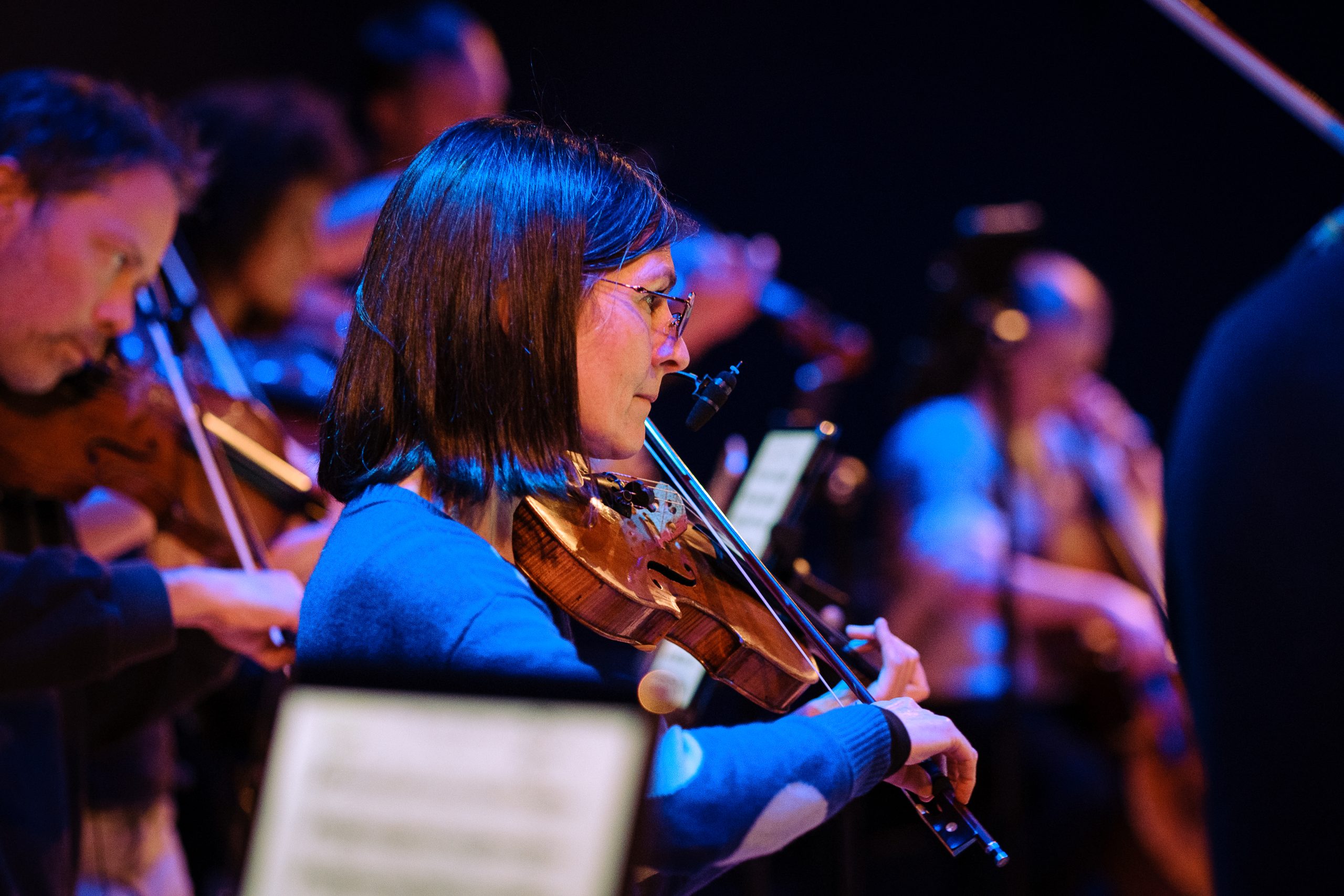Perfectly Good Food by Margaret Li

By – Tracey McCallum
Images – Mel Taing
Margaret Li, also known as Mei, is the Glasgow based author of Perfectly Good Food: A Totally Achievable Zero Waste Approach to Home Cooking. Margaret co-founded Boston’s award-winning Mei Mei restaurant and also leads zero-waste seminars – advocating for sustainable food systems with the goal of making delicious food more fun and accessible for everyone.
How does an award-winning Boston restauranteur & food writer find themselves in Glasgow?
I love this city! My family has been coming here for years, my husband grew up in Ayrshire and lived in the West End in his twenties. We’ve always talked about moving here but a transatlantic move seemed so difficult and we moved to a few different places in America for his job instead. Then he went remote during the pandemic and we realised we could live wherever we liked, so of course our first thought was returning to Scotland.
How do you find the food scene in Scotland compared to the States?
I’m a big fan of the food scene here, with everything from local seafood to fabulous Indian food, excellent Chinese food and seriously impressive bakers. I’ve been really impressed by the diversity of cuisines, both in an international sense and the fact that you can get a great meal from a fancy restaurant or a pub or a food stall. My favourite thing, which we didn’t have in the States, is heading to the pub with the family – my kids read or colour on the kids menu and eat burgers or macaroni cheese, and my husband and I get to enjoy a fish supper and a drink in a relaxed and cosy atmosphere. I love how many vegetarian and vegan versions there are of everything as well.
Which Scottish delicacies have you tried and are there any that make you think- ‘absolutely not’?
I’ll try anything, at least once. I love a good scotch egg – the ones by Scotch & Co are amazing, especially the pork & mustard – and a sausage roll. It’s been fun to see so many versions of haggis, from haggis pakoras to really excellent vegetarian haggis. And I love tablet although I can’t eat too much of it before my sweet tooth has had enough.
Do you have some favourite West End food venues already?
There’s so much phenomenal food in the area – we recently had an incredible meal at Brett that included Orkney scallops with samphire and an umami glaze – and are big fans of Partick Duck Club as well. I love the big bowls of soup and the ma po tofu from Station Kitchen on Dumbarton Road and could eat the house black daal – an incredibly rich and buttery Daal Makhani that’s cooked for 7 hours – from Little Curry House on Byres Road for every meal.
How would you sum up Perfectly Good Food?
Our goal with Perfectly Good Food is to help make it easier and simpler to actually eat all the food you buy. We know no one wants to waste food, but it can be so difficult when life gets in the way, so we’ve given our best tips, tricks, recipes, and strategies to help cook and save food in an accessible, achievable way while also getting dinner on the table.
The cost of living seems to be biting us all and zero waste is becoming ever more important – were these the key drivers in writing this book?
Absolutely – I’ve always been conscious of food costs and how to eat well but still affordably, and it’s only gotten more difficult since I started writing the book almost five years ago. Rising food costs really hit home, as roughly one-third of the food produced in the world goes uneaten every year. Imagine coming out of the shops with three bags of food and just putting one straight in the bin! If we can actually cook and eat everything we buy, we can save money and save the resources that went to produce that food. Plus, we can help save the environment because wasted food that goes to landfill emits harmful greenhouse gases and contributes to climate change. And also, learning to be more creative and flexible in your cooking only serves to make you a better chef.

What was the starting point for the book and how did you decide on the format? It’s an unusual cook book in that there are helpful illustrations but no food photography.
The idea for this book came about when I was writing my first cookbook – a book focused on Chinese American cuisine called Double Awesome Chinese Food – and learned about how the way we write recipes can contribute to food waste. If we see a recipe with one tablespoon of fresh coriander, we might run to the shops and buy a whole bunch, but then what do we do with a bunch-minus-one-tablespoon of fresh herbs?
This book is all about how to taste and experiment, and maybe use two or three tablespoons of herbs in your dish, but also learn how to make a herb salad and a herb pesto, plus freeze some herbs and even make a herb-infused cocktail! And given that we’re focused on flexibility, it didn’t make sense to have one single photo that showed what a dish might look like, because it could be different every time based on what you’re using up and what you had in your fridge. So the illustrations are meant to be more visually useful and helpful in your cooking process – maybe as a flow chart or showing a few different use-it-up options – rather than showing a finished dish.
I think we can all relate to those moments where we stand clueless in front of the fridge not quite knowing what to do with the odd bits and pieces lingering there -do you think it’s easy for people to throw a few random things together to make a meal or do you think we all need a bit more food knowledge which would allow us to be more confident in the kitchen?
You’ve nailed the point exactly, which is that it all depends on your level of confidence in the kitchen. Some people come by it naturally or from having cooked for years – they’ll be able to substitute one leafy green for another, or use up an item in the pantry instead of running out to buy more. But if you’re new to cooking or rely heavily on recipes, this will be something to practice and get used to, which is why we’ve provided lots of guidelines and suggestions.
We’re all about empowering people in the kitchen to make decisions and cook food the way they like, not feel they have to follow a recipe down to the gram. The more you cook and experiment, the more likely you are to use up what you have and eat what you’ve made – and if not, you eat the evidence (or compost it) and move on to your next meal.
I like the Store It Right, Save For Later and You Can Still Eat It sections. Do you think supermarkets are confusing/conditioning us with too much packaging, everything looking uniform and use-by dates?
Supermarkets and the food industry often make things difficult with expectations on perfect-looking produce as well as confusing expiration dates (most expiration dates are about when a product is at its best, not when it is actually unsafe to eat). I will say though that I’ve been delighted by various strategies in the Scottish supermarkets to cut down on food waste, such as selling wonky apples and raspberries at Morrisons, packaging up the sushi ends for a delicious cheap meal at Waitrose, and discounting food close to its best-buy dates in many shops.

Throwing away food is so wasteful, especially when it’s so expensive -what are the key rules to follow to know that you can still eat something a little past it’s best and what should you absolutely avoid taking a chance on?
We always talk about using your senses to help evaluate food – look at the food for mold, feel it to see if the texture is off, and absolutely use your nose to see if anything smells off. If it looks fine and smells fine, especially for shelf-stable pantry items, it’s probably fine to eat. And don’t forget common sense! You can look up online whether you should be more discerning – be more careful with deli meats, for example, than slightly stale breakfast cereal – and take more care if you’re feeding babies, the elderly, or anyone immuno-compromised. And if it isn’t good, just bin it – I love that Glasgow picks up food waste so you’ve got environmentally friendly ways to recycle anything that doesn’t look good.
What are your top store cupboard essentials – things you think useful for everyone to have?
My personal favorites are rice and pasta, because you can use up just about anything in a fried rice or a pasta dish. Cans of coconut milk and an assortment of spices are great because you can turn so many things into a curry, stew, or soup. And lastly I always try to have puff pastry in the fridge, because any leftovers or random produce from my veg box feels fancy when scattered onto a tart or wrapped up into a roll.
As someone who uses a lot of veg, I decided to try the Crispy Vegetable Peels and they were delicious although I used the air fryer instead of the oven and was delighted with the results Do you have a favourite recipe featured in the book?
I’m so happy to hear that and love that you took a chance and experimented with a new technique. I regularly turn to so many of the recipes, but now that it’s getting chilly, my favourite is the Cream-Of-Anything Soup. I get a weekly veg box delivery from Locavore in Partick and whenever anything has been hanging around in the fridge too long – beetroot, turnips, wonky-looking carrots – it all goes into a delicious homemade soup.
What’s next in store for you?
I’m simultaneously planning my next cookbook and writing my first novel – fingers crossed that you’ll see one or both of them in bookstores someday!
Get 10% off Perfectly Good Food at Waterstones Byres Road for WESTENDER readers.
Return to Culture and Arts Articles









